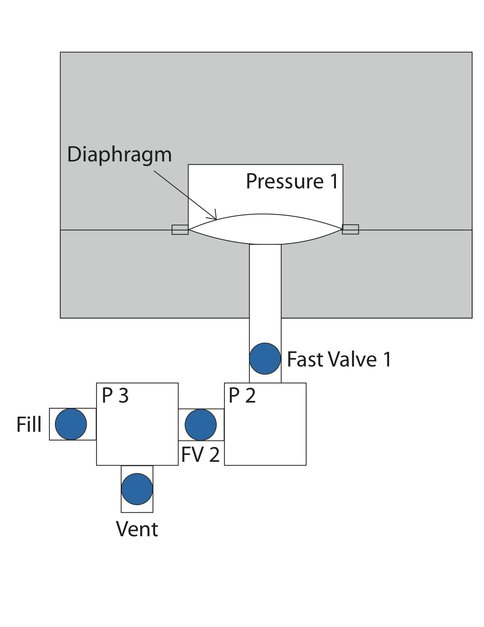2009 Annual Science Report
 NASA Jet Propulsion Laboratory - Titan
Reporting | JUL 2008 – AUG 2009
NASA Jet Propulsion Laboratory - Titan
Reporting | JUL 2008 – AUG 2009
Task 2.2.1 Characterization of Aerosol Nucleation and Growth
Project Summary
Aerosol nucleation in the Titan atmosphere may form the orange material seen in visible images.
Project Progress
Co-Investigator Richard Flagan and his group reviewed approaches for quantitative measurements of the rate of homogeneous nucleation. They have built a nucleation-pulse expansion cloud chamber, illustrated in Figure 1, for this study. In this system, supersaturation sufficient to induce nucleation is produced by adiabatic expansion. This system uses adiabatic expansion to produce supersaturation in a vapor mixture, maintains that supersaturation for a fixed time interval to allow nuclei to form, and then recompresses the gas to reduce the supersaturation so the nuclei grow without additional new particle formation. Mie scattering patterns in light scattering at fixed angle are used to determine the number concentration of grown particles from which the nucleation rate is calculated. Operational testing of the apparatus is now underway. For the initial experiments, the conditions and vapors used in previous nucleation studies to enable apparatus validation before moving on to low temperature studies of tholin-related vapors.
Figure 1. Schematic of the nucleation pulse apparatus. A gas containing the vapor is introduced into chamber 1, with an inert gas below the diapragm. Initial expansion is initiated by opening fast valve 1, allowing the gas to vent into evacuated chamber 2. After time has been allowed for nucleation, fast valve 2 allows gas in chamber 3 to partially recompress the sample, stopping nucleation while maintaining sufficient supersaturation to allow the nuclei to grow. The number of particles produced is determined from analysis of Mie resonances in light scattering observations made at fixed angle.
-
PROJECT INVESTIGATORS:
-
RELATED OBJECTIVES:
Objective 1.1
Formation and evolution of habitable planets.
Objective 2.2
Outer Solar System exploration
Objective 3.1
Sources of prebiotic materials and catalysts
Objective 3.2
Origins and evolution of functional biomolecules
Objective 3.3
Origins of energy transduction
